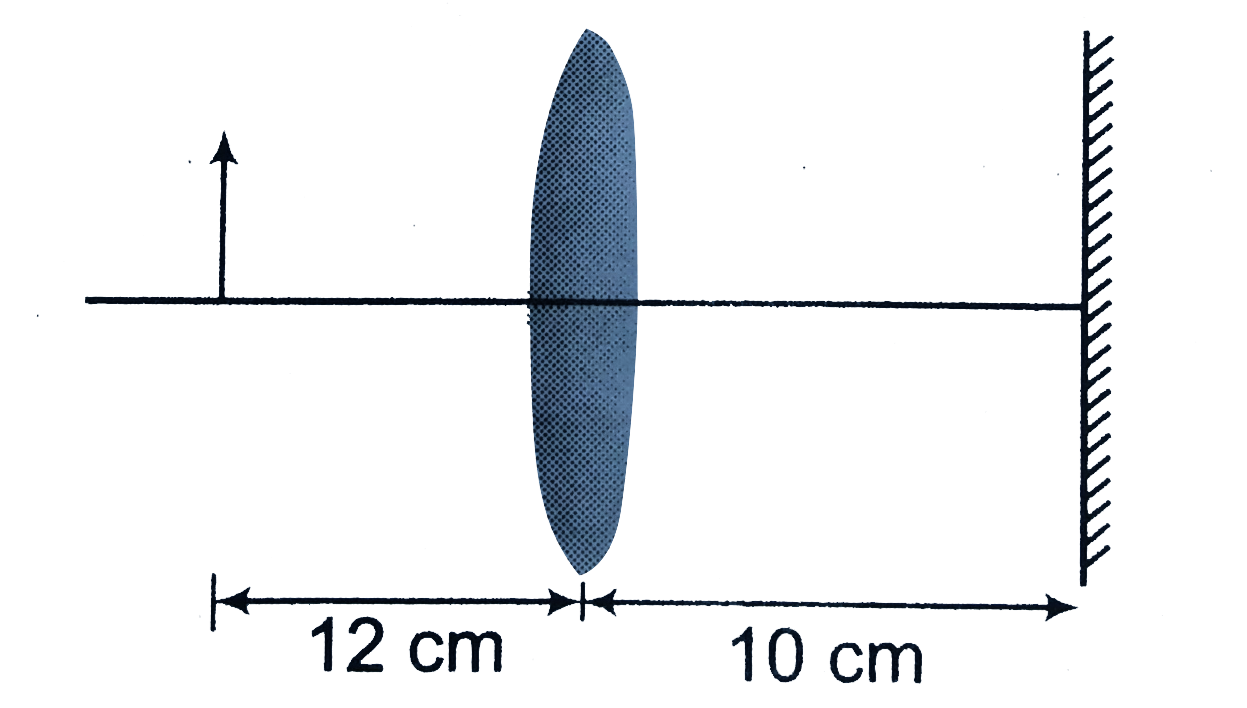An observer to the right of the mirror-lens combination shown in Figure sees two real images that are the same size and in the same location. One image is upright and the other is inverted. Both images are 1.50 times larger than the object. The lens has a focal length of 10.0cm. The lens and mirror are separated by 40.0cm. Determine the focal length of the mirror. Do not assume that the figure is drawn to scale.

35/6cm
2cm
20cm
10cm
The correct Answer is:B
The object must be located at the centre of the curvature of the mirror for this to happen.
For the inverted image formed directly by the lens we can write
1v−1u=110,vu=−32
Topper's Solved these Questions
- TEST PAPERSBOOK - FIITJEECHAPTER - TEST PAPERSEXERCISE - PHYSICS
747 Videos
- SIMPLE HARMONIC MOTIONBOOK - FIITJEECHAPTER - SIMPLE HARMONIC MOTIONEXERCISE - Assignment Problems (Objective) (Level-II)
20 Videos
- WORK, ENERGY AND POWER BOOK - FIITJEECHAPTER - WORK, ENERGY AND POWER EXERCISE - COMPREHENSIONS ( Comprehension-II)
5 Videos
Similar Questions
Aspherical mirror and a lens have same focal length of - 20 cm. What type of mirror and lens are these?
View SolutionA 2 cm high object is placed at a distance of 32 cm from a concave mirror. The image is real, inverted and 3 cm in size. Find the focal length of the mirror and the position where the image is formed?
View Solution
Knowledge Check
A convex lens of focal length 15 cm is placed on a plane mirror. An object is placed at 30 cm from the lens. The image is
Areal, at 30 cm in front of the mirrorBreal, at 30 cm behind the mirrorCreal, at 10 cm in front of the mirrorDvirtual, at 10 cm behind the mirrorAn object, a convex lens of focal length 20cm and a plane mirror are arranged as shown in the figure. How far behind the mirror is the second image formed?
 A30cmB20cmC40cmD50cm
A30cmB20cmC40cmD50cmThe distance between the object and its real image from the convex lens is 60 cm and the height of image is two times the height of object . The focal length of the lens is
A203 cmB20 cmC403cmD40 cm
A convex lens and a convex mirror are separated by a distance of 10 cm such that the reflecting surface of the mirror faces the lens. The image of an object placed in front of the convex. Lens at a distance of 20 cm is found to coincide with the object. If the focal length of the convex lens is 15 cm, determine the focal length of the mierror.
View SolutionThe focal length of a concave mirror is 30cm.Find the position of the object in front of the mirror,so that the image is there times the size of the objects.
View SolutionThe image obtained with a convex lens is erect and its length is 4 times the length of the object. If the focal length of lens is 20cm, calculate the object and image distances.
View SolutionA convex lens of focal length 15 cm is placed on a plane mirror. An object is placed 20 cm from the lens. The image is formed
View SolutionA lens when placed on a plane mirror then object needle and its image coincide at 15 cm . The focal length of the lens is

View Solution
